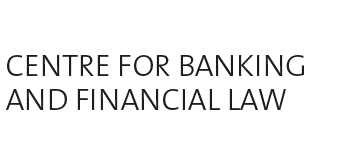
AI and Swiss financial institutions
Examples of application in relation to the European regulation

Dante O'Neil
(Translated by DeepL)
The European Regulation on Artificial Intelligence (AI Act) sets out a series of obligations that may apply to Swiss financial institutions even if they do not have a physical presence in the EU. This commentary uses three practical examples to illustrate how the AI Act could apply in practice and what Swiss financial institutions should be aware of, particularly when an AI system (AIS) is classified as high risk.
As a reminder, the AI Act is likely to apply to Swiss companies if they provide AIS to entities established in the EU or if the outputs produced by these AIS (the ‘sorties’, according to the AI Act terminology, such as predictions, content, recommendations or decisions that may influence physical or virtual environments) are used in the EU (Art. 2 para. 1 lit. a and c and Art. 3 para. 1 AI Act). This would directly target Swiss financial institutions whose AIS produce outputs used in the EU (see Fischer, cdbf.ch/1397/).
Two concepts are central to understanding the AI Act : the distinction between ‘supplier’ and ‘deployer’, and the classification of AIS according to their level of risk. The supplier develops or markets an AIS (Art. 3 para. 3 AI Act), while the deployer uses it in the course of their professional activity (Art. 3 para. 4 AI Act). These roles are dealt with in two other commentaries (see Fischer, cdbf.ch/1418/ for suppliers ; Fischer, cdbf.ch/1420/ for deployers). With regard to classification according to risk level, AIS referred to in Art. 6 AI Act and listed in Annex III AI Act are classified as high risk and entail enhanced obligations for both providers and deployers (see Caballero Cuevas, cdbf.ch/1406/). Annex III AI Act lists eight specific areas. Some of these may be relevant to the financial sector, in particular areas related to employment (Annex III para. 4 lit. a and b AI Act) and essential private services, such as credit assessment and pricing in life or health insurance (Annex III para. 5 lit. b and c AI Act).
The following three practical examples illustrate the relationship between the high-risk classification and the roles of provider and deployer in order to identify the resulting obligations. However, they should be read with caution, as each situation depends on the specific circumstances.
1. Generating content for customers in the EU
Employees of a Swiss financial institution occasionally use a large language model (LLM) such as GPT-4 via an application programming interface (API) to generate content (emails, presentations, translations) sent to customers in the EU (for more details, see Caballero Cuevas, cdbf.ch/1382/). If the output (content) were used in the EU, the AI Act could apply. This AIS, provided that it does not fall within one of the areas listed in Annex III AI Act, would not be classified as high risk. The LLM provider would be considered a supplier within the meaning of the AI Act, and the financial institution would be considered a deployer. As such, the latter would be subject to certain obligations, which are unlikely to be relevant in practice in the financial sector. In particular, it would have to inform the data subjects when the AIS processes personal data to detect emotions, intentions or to classify them according to biometric characteristics (Art. 50 AI Act).
2. Analysis of applications for a position in the EU
If the same LLM were used by a Swiss financial institution to analyse applications for a position in a subsidiary established in the EU, the AI Act could also apply (see Hirsch, cdbf.ch/1384/). However, in this case, the AIS could be classified as high risk, as the recruitment of natural persons is listed in Annex III para. 4 lit. a AI Act. The deployer of a high-risk AIS would then be subject to enhanced obligations. In particular, they would have to ensure that the system is used in accordance with the instructions, provide competent human supervision, inform the candidates concerned, monitor the functioning of the AIS, notify any identified risks without delay and keep usage logs (Art. 26 AI Act).
It should be noted that if the position in question were located in Switzerland, the AI Act would not apply, even if the applicant were resident in the EU. The decisive criterion would remain the place of use of the output (the analysis of applicants), in this case the registered office of the financial institution.
3. Credit scoring for customers domiciled in the EU
A Swiss financial institution uses a credit scoring tool based on an SIA developed by a fintech also established in Switzerland to assess the creditworthiness of customers domiciled in the EU. If the output (the credit score) were used in the EU to grant a loan, the AI Act could apply. Credit scoring is one of the high-risk areas (Annex III para. 5 let. b AI Act). An exception is provided for systems intended exclusively for the detection of financial fraud, which does not apply in this case. In this context, the fintech would be considered a provider of a high-risk AIS, and the financial institution would be considered a user of a high-risk AIS. The provider would have to guarantee the compliance of the AIS (technical documentation, quality requirements, CE marking, registration), ensure traceability and transparency, and be able to demonstrate this compliance to the competent authorities on request (Art. 16 AI Act). For its part, the deployer would also be subject to enhanced obligations (see case 2, Art. 26 AI Act).
Conclusion
These cases suggest that the role of deployer – often that of Swiss financial institutions – tends to entail only limited obligations, which are rarely relevant in the day-to-day practice of the financial sector. However, when an AIS falls within one of the areas listed in Annex III AI Act, it could be classified as high risk, which would subject the deployer to a regime of enhanced obligations. The areas of employment (Annex III para. 4 AI Act) and essential private services (Annex III para. 5 let. b and c AI Act) seem particularly relevant to Swiss financial institutions. These provisions will be fully applicable from 2 August 2026. It therefore seems appropriate to focus on these use cases in order to ensure compliance with the AI Act by the time it comes into force.



